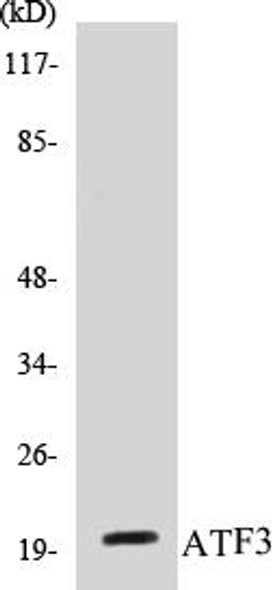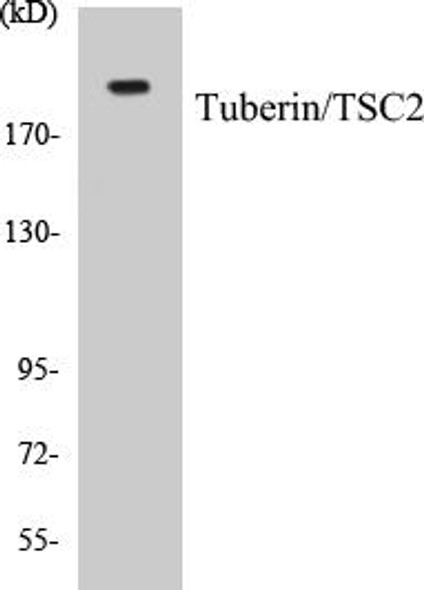eIF2alpha Colorimetric Cell-Based ELISA Kit (CBCAB00297)
- SKU:
- CBCAB00297
- Product Type:
- ELISA Kit
- ELISA Type:
- Cell Based
- Research Area:
- Metabolism
- Reactivity:
- Human
- Mouse
- Rat
- Detection Method:
- Colorimetric
Description
eIF2alpha Colorimetric Cell-Based ELISA Kit
The EIF2alpha (Eukaryotic Translation Initiation Factor 2 Subunit Alpha) Colorimetric Cell-Based ELISA Kit is specifically designed for the accurate and sensitive detection of EIF2alpha levels in cell lysates and tissue samples. This kit offers high specificity and reproducibility, ensuring reliable results for a variety of research applications.EIF2alpha is a key regulator of protein synthesis and plays a critical role in cellular stress response pathways. Dysregulation of EIF2alpha has been implicated in various diseases, including cancer, neurodegenerative disorders, and metabolic conditions.
As such, this kit is essential for studying the role of EIF2alpha in these diseases and developing potential therapeutic interventions.With its user-friendly protocols and high-performance features, the EIF2alpha Colorimetric Cell-Based ELISA Kit is a valuable tool for researchers looking to investigate the function and regulation of EIF2alpha in cellular processes and disease pathogenesis.
| Product Name: | eIF2alpha Colorimetric Cell-Based ELISA |
| Product Code: | CBCAB00297 |
| ELISA Type: | Cell-Based |
| Target: | eIF2alpha |
| Reactivity: | Human, Mouse, Rat |
| Dynamic Range: | > 5000 Cells |
| Detection Method: | Colorimetric 450 nmStorage/Stability:4°C/6 Months |
| Format: | 96-Well Microplate |
The eIF2alpha Colorimetric Cell-Based ELISA Kit is a convenient, lysate-free, high throughput and sensitive assay kit that can detect eIF2alpha protein expression profile in cells. The kit can be used for measuring the relative amounts of eIF2alpha in cultured cells as well as screening for the effects that various treatments, inhibitors (ie siRNA or chemicals), or activators have on eIF2alpha.
Qualitative determination of eIF2alpha concentration is achieved by an indirect ELISA format. In essence, eIF2alpha is captured by eIF2alpha-specific primary antibodies while the HRP-conjugated secondary antibodies bind the Fc region of the primary antibody. Through this binding, the HRP enzyme conjugated to the secondary antibody can catalyze a colorimetric reaction upon substrate addition. Due to the qualitative nature of the Cell-Based ELISA, multiple normalization methods are needed:
| 1. | A monoclonal antibody specific for human GAPDH is included to serve as an internal positive control in normalizing the target absorbance values. |
| 2. | Following the colorimetric measurement of HRP activity via substrate addition, the Crystal Violet whole-cell staining method may be used to determine cell density. After staining, the results can be analysed by normalizing the absorbance values to cell amounts, by which the plating difference can be adjusted. |
| Database Information: | Gene ID: 1965, UniProt ID: P05198, OMIM: 603907, Unigene: Hs.151777 |
| Gene Symbol: | EIF2S1 |
| Sub Type: | None |
| UniProt Protein Function: | eIF2-alpha: a translation initiation factor that functions in the early steps of protein synthesis by forming a ternary complex with GTP and initiator tRNA. This complex binds to a 40s ribosomal subunit, followed by mRNA binding to form a 43S preinitiation complex. Junction of the 60S ribosomal subunit to form the 80S initiation complex is preceded by hydrolysis of the GTP bound to eIF-2 and release of an eIF-2-GDP binary complex. In order for eIF-2 to recycle and catalyze another round of initiation, the GDP bound to eIF-2 must exchange with GTP by way of a reaction catalyzed by eIF-2B. Phosphorylated by at least 4 kinases: PERK, GCN2, HRI and PKR. Phosphorylation stabilizes the eIF-2/GDP/eIF-2B complex and prevents GDP/GTP exchange reaction, thus impairing the recycling of eIF-2 between successive rounds of initiation and leading to global inhibition of translation. Upregulated in some thyroid cancers and bronchiolo-alveolar adenocarcinomas; aberrant phosphorylation correlates with Alzheimer disease and Epstein-Barr virus infections. |
| UniProt Protein Details: | Protein type:RNA-binding; Translation initiation; Translation Chromosomal Location of Human Ortholog: 14q23.3 Cellular Component: eukaryotic translation initiation factor 2B complex; polysome; membrane; stress granule; nucleus; cytosol; eukaryotic translation initiation factor 2 complex Molecular Function:protein binding; translation initiation factor activity; ribosome binding Biological Process: regulation of translation initiation in response to stress; unfolded protein response, activation of signaling protein activity; cellular protein metabolic process; translation; unfolded protein response; protein amino acid autophosphorylation; translational initiation; gene expression |
| NCBI Summary: | The translation initiation factor EIF2 catalyzes the first regulated step of protein synthesis initiation, promoting the binding of the initiator tRNA to 40S ribosomal subunits. Binding occurs as a ternary complex of methionyl-tRNA, EIF2, and GTP. EIF2 is composed of 3 nonidentical subunits, the 36-kD EIF2-alpha subunit (EIF2S1), the 38-kD EIF2-beta subunit (EIF2S2; MIM 603908), and the 52-kD EIF2-gamma subunit (EIF2S3; MIM 300161). The rate of formation of the ternary complex is modulated by the phosphorylation state of EIF2-alpha (Ernst et al., 1987 [PubMed 2948954]).[supplied by OMIM, Feb 2010] |
| UniProt Code: | P05198 |
| NCBI GenInfo Identifier: | 124200 |
| NCBI Gene ID: | 1965 |
| NCBI Accession: | P05198.3 |
| UniProt Related Accession: | P05198 |
| Molecular Weight: | 315 |
| NCBI Full Name: | Eukaryotic translation initiation factor 2 subunit 1 |
| NCBI Synonym Full Names: | eukaryotic translation initiation factor 2, subunit 1 alpha, 35kDa |
| NCBI Official Symbol: | EIF2S1 |
| NCBI Official Synonym Symbols: | EIF2; EIF-2; EIF2A; EIF-2A; EIF-2alpha |
| NCBI Protein Information: | eukaryotic translation initiation factor 2 subunit 1; eIF-2-alpha; eukaryotic translation initiation factor 2 subunit alpha |
| UniProt Protein Name: | Eukaryotic translation initiation factor 2 subunit 1 |
| UniProt Synonym Protein Names: | Eukaryotic translation initiation factor 2 subunit alpha; eIF-2-alpha; eIF-2A; eIF-2alpha |
| Protein Family: | Eukaryotic translation initiation factor |
| UniProt Gene Name: | EIF2S1 |
| UniProt Entry Name: | IF2A_HUMAN |
| Component | Quantity |
| 96-Well Cell Culture Clear-Bottom Microplate | 2 plates |
| 10X TBS | 24 mL |
| Quenching Buffer | 24 mL |
| Blocking Buffer | 50 mL |
| 15X Wash Buffer | 50 mL |
| Primary Antibody Diluent | 12 mL |
| 100x Anti-Phospho Target Antibody | 60 µL |
| 100x Anti-Target Antibody | 60 µL |
| Anti-GAPDH Antibody | 60 µL |
| HRP-Conjugated Anti-Rabbit IgG Antibody | 12 mL |
| HRP-Conjugated Anti-Mouse IgG Antibody | 12 mL |
| SDS Solution | 12 mL |
| Stop Solution | 24 mL |
| Ready-to-Use Substrate | 12 mL |
| Crystal Violet Solution | 12 mL |
| Adhesive Plate Seals | 2 seals |
The following materials and/or equipment are NOT provided in this kit but are necessary to successfully conduct the experiment:
- Microplate reader able to measure absorbance at 450 nm and/or 595 nm for Crystal Violet Cell Staining (Optional)
- Micropipettes with capability of measuring volumes ranging from 1 µL to 1 ml
- 37% formaldehyde (Sigma Cat# F-8775) or formaldehyde from other sources
- Squirt bottle, manifold dispenser, multichannel pipette reservoir or automated microplate washer
- Graph paper or computer software capable of generating or displaying logarithmic functions
- Absorbent papers or vacuum aspirator
- Test tubes or microfuge tubes capable of storing ≥1 ml
- Poly-L-Lysine (Sigma Cat# P4832 for suspension cells)
- Orbital shaker (optional)
- Deionized or sterile water
*Note: Protocols are specific to each batch/lot. For the correct instructions please follow the protocol included in your kit.
| Step | Procedure |
| 1. | Seed 200 µL of 20,000 adherent cells in culture medium in each well of a 96-well plate. The plates included in the kit are sterile and treated for cell culture. For suspension cells and loosely attached cells, coat the plates with 100 µL of 10 µg/ml Poly-L-Lysine (not included) to each well of a 96-well plate for 30 minutes at 37°C prior to adding cells. |
| 2. | Incubate the cells for overnight at 37°C, 5% CO2. |
| 3. | Treat the cells as desired. |
| 4. | Remove the cell culture medium and rinse with 200 µL of 1x TBS, twice. |
| 5. | Fix the cells by incubating with 100 µL of Fixing Solution for 20 minutes at room temperature. The 4% formaldehyde is used for adherent cells and 8% formaldehyde is used for suspension cells and loosely attached cells. |
| 6. | Remove the Fixing Solution and wash the plate 3 times with 200 µL 1x Wash Buffer for five minutes each time with gentle shaking on the orbital shaker. The plate can be stored at 4°C for a week. |
| 7. | Add 100 µL of Quenching Buffer and incubate for 20 minutes at room temperature. |
| 8. | Wash the plate 3 times with 1x Wash Buffer for 5 minutes each time. |
| 9. | Add 200 µL of Blocking Buffer and incubate for 1 hour at room temperature. |
| 10. | Wash 3 times with 200 µL of 1x Wash Buffer for 5 minutes each time. |
| 11. | Add 50 µL of 1x primary antibodies (Anti-eIF2alpha Antibody and/or Anti-GAPDH Antibody) to the corresponding wells, cover with Parafilm and incubate for 16 hours (overnight) at 4°C. If the target expression is known to be high, incubate for 2 hours at room temperature. |
| 12. | Wash 3 times with 200 µL of 1x Wash Buffer for 5 minutes each time. |
| 13. | Add 50 µL of 1x secondary antibodies (HRP-Conjugated AntiRabbit IgG Antibody or HRP-Conjugated Anti-Mouse IgG Antibody) to corresponding wells and incubate for 1.5 hours at room temperature. |
| 14. | Wash 3 times with 200 µL of 1x Wash Buffer for 5 minutes each time. |
| 15. | Add 50 µL of Ready-to-Use Substrate to each well and incubate for 30 minutes at room temperature in the dark. |
| 16. | Add 50 µL of Stop Solution to each well and read OD at 450 nm immediately using the microplate reader. |
(Additional Crystal Violet staining may be performed if desired – details of this may be found in the kit technical manual.)






